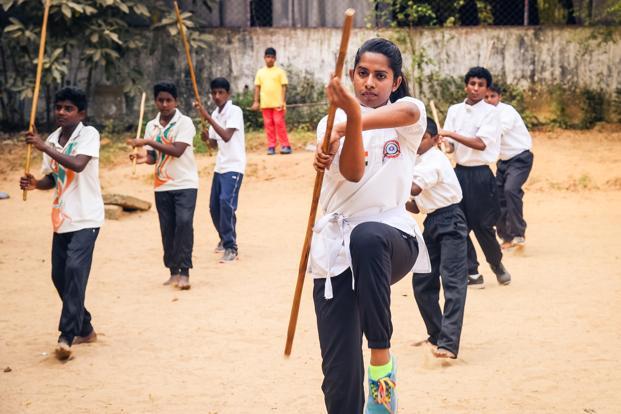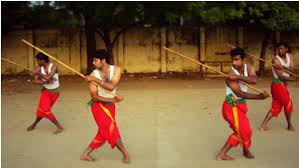Silambam is an ancient martial art form practiced in the Tamil Nadu state of India. Silambam originated around 1000 BCE in the Tamilkam region(which is today known as the Tamil Nadu).
It is a weapon-based martial art and it is clearly mentioned in the Sangam literature of 400 BCE. Silambam is also practiced by the Tamil community people living in Sri Lanka and Malaysia and hence it is famous outside India too.
List of Silambam in Tamil Nadu
- Origin
- Different styles of Silambam
- Weapon Used
- Benefits
The word Silambam is derived from the Tamil word “Silam” which means hills and the Kannada word “Bamboo”. It is important to note that the modern English word “bamboo” is derived from the Kannada word “Bamboo”. Hence we can say that the name of the martial art is based upon the weapon used in martial art.
In Silambam, a special type of bamboo is used which is found in the Kurinji hills of modern-day Kerala. Masters in the Silambam martial arts called asaan while grandmasters in this martial art are known as periyasaan, iyan or annaavi. There are about 18 different styles of Silambam famous in India and outside India. But in the modern form of Silambam, a lot of weapons used apart from Bamboo.
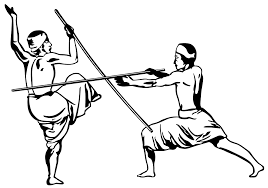
Origin –
There is a story famous regarding the origin of Silambam. Locals say that the Silambam was originated several thousand years ago and this form was brought to the world by the Sage Agastya. Sage Agastya is to Indian martial art form what Sage Patanjali is to Yoga.
It is said that one day, Sage Agastya was travelling to Vellimalai and in between of his journey, he discussed the fundamentals of Sanatan Dharma and the Philosophy of Hinduism to an old man. The old man was none other than God Murugan. The old man taught him of kundalini yoga. Agastya practiced this method of meditation and eventually compiled the teaching on the palm leaves.
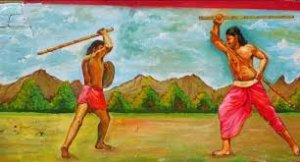
There are some tests in the Sangam literature which tells that this martial art form was practiced around 4th BC. The Bamboo staffs were in great demands specially from the South Asian countries. Silambam was also taught to the soldiers of the Chola, Chera and Pandya Dynasty. Thus it was a very famous martial art form in the armies of rulers of South India.
Different styles of Silambam –
Silambam is practiced in India and some other countries of South-East Asia. There are about 18 different form or styles of Silambam practiced in modern times. The different styles of Silambam are Nillai Kalakki (It is a form of Silambam which is popular outside India,
it is especially practiced in Sri Lanka and Malaysia), Karnatakan (This form of Silambam is practiced in some parts of Karnataka), Kuravanji( This style of Silambam is famous in Kerala and Tamil Nadu), Kuthu Kuravanji, Komberi Mookan, Paniyeri Mallan, Minnal Veeran, Minnal Vettu, Nagam, Naga Pasanam, Kalla-Pathu, Thuluk Kanam, Markanam, Kida Muttu, Kalayana Varisai, Tomman Kuthu, Paarvai Vilayaatu, Kallagam.
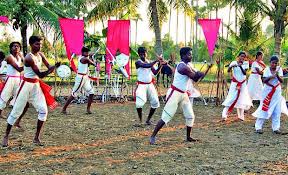
Weapon Used –
Silambam martial art form is completely based on the use of bamboo as a weapon. But with the passage of time, Silambam evolved and different types of weapons became a part of the martial art form. Today a lot of weapons are used in Silambam martial art.
The weapons which are used other than bamboo are Maru(weapon made from deer horns) , Aruval (sickle) , Panthukol (balls with weighted chain on each end) , Savuku (whip) , Vaal(sword), Kuttu Katai, Katti (Knife) , Katari (Blades) , Surul Kaththi( Flexible sword) and Sedikuchi(short stick).
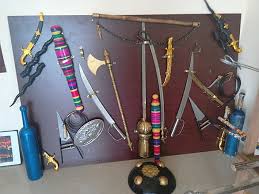
Benefits –
Silambam not only as an important martial art which was used in different wars in ancient times, but it also emerged as an exercise which helped in improving both – physical and mental health. Regular training of Silambam helps in improving muscle flexibility, coordination between different parts of the body, stabilizing the body posture and improving the muscle endurance.
It also increases the speed of the body and helps in relieving the pain of muscle and joints. These are the physical benefits of Silambam whereas there are a lot of mental benefits from Silambam also. It helps in growing concentration. The practitioners of Silambam have been seen to have high confidence levels.

Conclusion –
Silambam today has not only emerged as a form of martial art but it also reflects the traditional history of southern states of India, especially Tamil Nadu and Kerala. Silambam is not only practiced in southern parts of India but it has its influence outside India too.
Due to immense popularity, this form of martial art is also encouraged by the state governments of Southern states. Silambam started as a form of martial art which consisted of bamboo as its main weapon. But with the passage of time, Silambam evolved into different forms and today a lot of weapons like swords, chains are now used in Silambam.
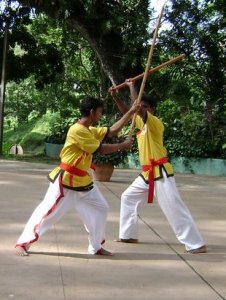
Silambam training helps in the physical and mental development of a person. It helps to gain physical fitness and flexibility and also helps to grow concentration. So Silambam is a complete exercise of body and mind. Silambam can also be learned as a means for self-defense.

